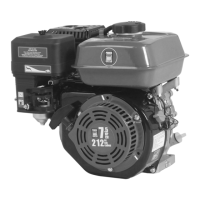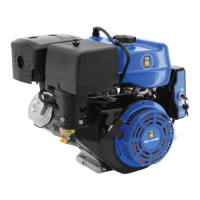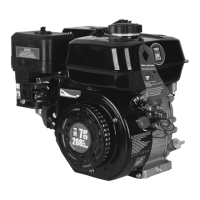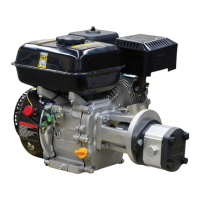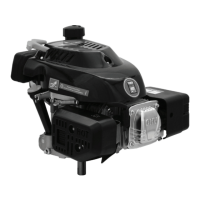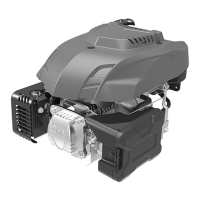Do you have a question about the Power Fist 196cc OHV and is the answer not in the manual?
Provides instructions for safe operation, maintenance, and troubleshooting of the 196cc OHV gas engine.
Lists common applications for the 196cc OHV gas engine.
Details required safety gear like goggles, gloves, and footwear for safe operation.
Addresses engine limitations, modification risks, and hazards of hot engine parts.
Steps for removing and inspecting engine components after delivery.
Covers engine assembly, the critical need for oil, and initial checks like the air filter.
Checklist of essential steps before starting the engine, including securing parts and checking levels.
Detailed steps for starting the engine, including choke and throttle settings.
Instructions for normal engine shutdown and emergency stop procedures.
Presents a schedule for routine inspections and servicing of engine components at specified intervals.
Guidelines on suitable gasoline types, octane ratings, and ethanol content.
Step-by-step guide for safely adding fuel, including cooling time and spill cleanup.
Instructions for checking oil level, recommended oil types, and viscosity charts.
Detailed steps for adding oil, including using a funnel and ensuring the correct level.
Advice on carburetor settings, factory defaults, and modifications for high altitude operation.
Information about engine emissions and adherence to Canadian emission standards.
Instructions for cleaning and maintaining the air filter to ensure proper airflow and engine performance.
Guidance on selecting, inspecting, gapping, and replacing the spark plug.
Safe methods for cleaning the engine exterior, avoiding water damage, and touching up paint.
Detailed steps for preparing the engine for extended storage, including oil changes and rust prevention.
Advice on storing fuel, preventing phase separation, and using fuel stabilizers.
Steps for preparing the engine after storage, including checks, refueling, and initial startup.
Identifies common causes for the engine not starting and provides suggested solutions.
Lists potential causes for reduced engine power and recommended corrective actions.
| Displacement | 196cc |
|---|---|
| Fuel Type | Gasoline |
| Power Output | 6.5 HP |
| Starting System | Recoil Start |
| Bore x Stroke | 68mm x 54mm |
| Oil Capacity | 0.6 L |
| Engine Type | 4-stroke OHV |
| Cooling System | Air-cooled |
| Torque | 8.1 ft-lbs |
| Ignition System | Transistorized magneto |
